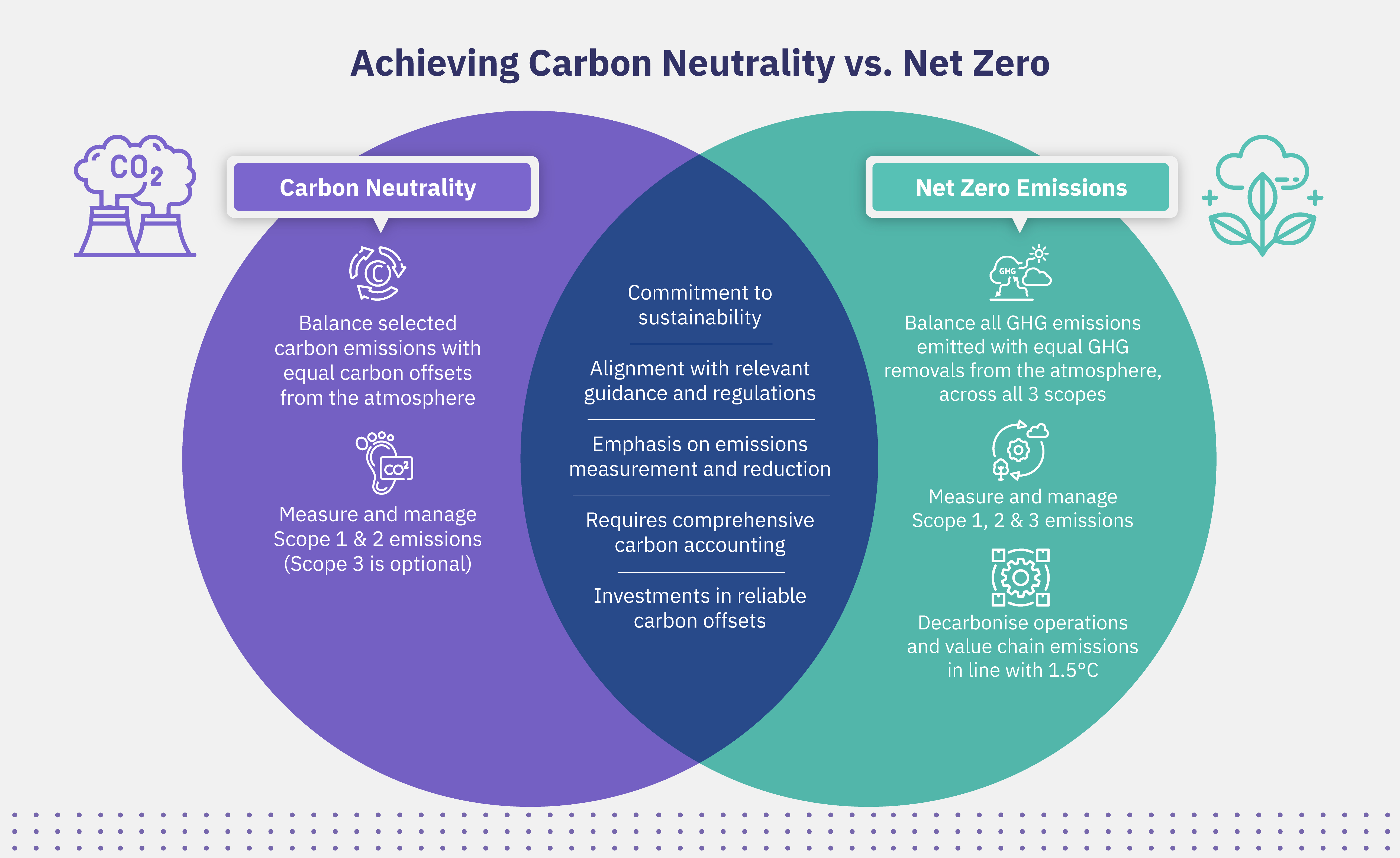How Achievable is Net Zero?
As the targets outlined in the Paris Agreement inch closer and closer, businesses and governments are trying to answer the question - is it possible to achieve net zero emissions? The answer to this question is yes. Achieving net zero is not just an idealistic aspiration — it is a tangible, realistic goal. However, businesses still struggle to kickstart their decarbonisation journeys for a variety of reasons. This raises a crucial question: why are we falling short of our emission reduction targets, and what can be done to address these challenges?
Let’s understand what exactly net zero means and how we can achieve it.

Net Zero Challenges for Businesses
Net zero emissions refers to the balance between the amounts of greenhouse gases produced and the amounts of those gases removed from the atmosphere. However, businesses often get stuck when it comes to answering the question of how to achieve net zero. This is because achieving net zero emissions can be complex, involving granular emissions accounting and implementing comprehensive management strategies. It can be time-consuming, financially taxing, and resource-intensive. Furthermore, the data challenge in measuring emissions continues to prevail – where companies with expansive supply chains are sometimes unable to derive accurate data from varied sources.
The complexity of achieving net zero necessitates a deeper understanding of its contributing factors. It is imperative for businesses to recognise that transitioning to net zero requires more than symbolic commitments; it demands concrete, quantifiable actions. To make meaningful progress towards net zero, corporate action must reflect a profound understanding of keeping emissions in line with the 1.5 °C global warming target. Armed with this knowledge, effective mitigation hierarchies and other decarbonisation strategies can be formulated to bridge the gap between commitment and action.
How to Achieve Net Zero Emissions?
Businesses looking to manage their carbon footprint and move towards the goal of net zero emissions should first measure their emissions. This includes Scope 1, 2, and 3 emissions. While many companies are easily able to measure their Scope 1 and 2 emissions, Scope 3 proves to be a challenge because it comprises 15 categories of upstream and downstream emissions. However, decarbonisation platforms such as Terrascope can help expedite this process with the use of AI and machine learning.
The next step is to identify what products and processes are contributing the most to emissions, and what steps the company can take to reduce those emissions. Consider a hypothetical scenario of a manufacturing company, which has identified that a significant portion of its emissions stems from the production process, particularly in the painting and coating section. Further analysis reveals that the high energy consumption and use of solvent-based coatings in the painting process contribute substantially to their overall carbon footprint. This insight is crucial, as it pinpoints these areas where emissions are disproportionately high compared to other aspects of the manufacturing process.
Upon measuring emissions and auditing their supply chains, companies must then develop robust emissions reduction strategies. This could involve sourcing raw materials with lower embodied carbon or selecting suppliers with robust environmental practices. Decarbonisation can also include switching to renewable energy, altering procurement or distribution processes to reduce emissions, or even purchasing carbon credits. While these credits are not a replacement for direct emissions reduction, they can help companies make progress towards their sustainability goals.
According to scholars, achieving net zero emissions using an entirely renewable energy structure is feasible. With further advances in renewable energy technologies, energy production can enable decarbonisation strategies. Achieving net zero requires a holistic approach that includes scientific innovation, well-planned policies, as well as good financial planning.
Another key step to making net zero more achievable is reporting and disclosing sustainability data. Reporting and disclosing emissions have become essential components of corporate sustainability practices, offering a range of benefits that extend beyond environmental considerations. Initiating a commitment towards proactively sharing data requires visibility across the whole organisation in the first place. Doing so allows companies to ascertain their progress, and having that information facilitates ongoing compliance with stringent environmental regulations, avoiding legal repercussions and potential financial penalties.
How to Reach Net Zero with Terrascope
Terrascope’s end-to-end decarbonisation platform can play a vital role in helping businesses reach net zero. Terrascope helps these businesses overcome challenges such as emissions reduction planning and data management by combining AI-assisted carbon management and measurement with sustainability and industry expertise.
Through machine learning, advanced data analytics and reporting tools, Terrascope can streamline data collection, analysis, and reporting, ensuring accurate and transparent carbon accounting down the line. Terrascope can provide insights and recommendations to help businesses identify emission reduction opportunities and work towards net zero emissions.
